Previous
You can't make that video with two Magistretti chairs


Your dream house is one step away from you.
Subscribe to our newsletter and get 10% off orders of at least 100€!
Enjoy it and don’t miss out on our offers and updates.


I didn’t get much sleep the night before I met Stefano Giovannoni. The internet is bottomless source, and scratching the surface of the first page of Google results, Giovannoni was no longer talking about design as aesthetic research, but about abstract reflections and intellectual references: the passing of the dialectic between culture and business, the object as merchandise and consumption.
Moving from one question to the next, from link to link, I read more interviews, happy to give up a few hours's sleep. Giovannoni quoted Jean Baudrillard (the postmodern theorist who wrote Communicate? Communicate? Only vases communicate) as he designed cheeky and seductive objects for the mass public: nutcrackers, toothpick holders and chairs shaped like animals. And I wondered: what is this man hiding behind a rabbit?


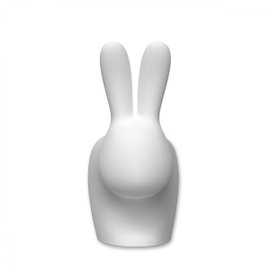
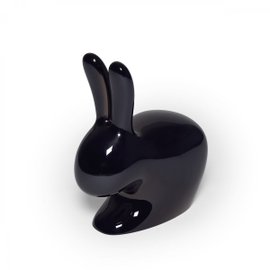
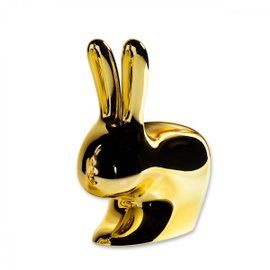
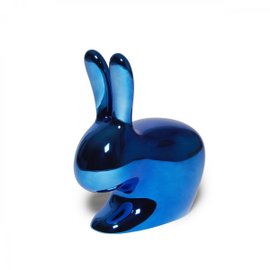
Alberto Alessi defined you as a methanoic designer. I’ve searched online for the definition: you must know that you’re the only methanoic designer. The only one in the world. I’ll ask you directly: what is a methanoic designer?
It’s true, methanoic is Alberto Alessi’s definition. Methanoic and paranoic designers. Let’s say that paranoic designers proceed on the basis of their own convictions, convinced they’re right. Methanoic ones, conversely, always seek comparison and synergy with the market and the world of consumption. This is what I’ve tried to do and what Alberto Alessi attempted to describe.
Stefano Giovannoni was born in La Spezia, graduated in Florence and has lived in Milan for some time. In the course of his career he has founded and dissolved a movement (Bolidism) but, above all, he has left a lasting mark on Alessi and Magis. And in the homes of millions. He’s been called the King Midas of design, and his magnificent studio-home, a four-storey building with a terrace in the design district of Tortona appears to confirm this.
Some see in your work hints of Jeff Koons: Warhol’s heir and an artist who seeks, stimulates and obtains the consensus of the public. The methanoic artist. Are they right?
Jeff Koons is a great artist and was one of my influences too but, even though we’ve both designed a rabbit, our affinity is not in superficial aspects, it’s having a concept as a starting point. Jeff Koons’ method is to transform an inflatable object into one made of steel. The concept behind my work is a rabbit whose own ears turn it into a seat. I don’t think the two can easily be compared.
We could say that both of you are playing around on the borders between art and design, but in different ways.
That’s right. Because if it wasn’t different you could say the same, on the other hand, of Takashi Murakami, who started work after my most eye-catching products in the nineties, the ones closest to the world of comic strips and science fiction.
So, what lies behind the rabbit, then?
What interests me primarily is the conceptual aspect of design: in this case, the ears that become the backrest of the chair. I would never design a chair in the shape of a cat. If I design an object in the shape of an animal, it isn’t because I want to design the animal. It’s a game of functionality and structure.

In every one of my designs - even in my first objects for Alessi - there’s always a clear difference from the world of gadgets. They’re never produced for their own sake. The nutcracker has the shape of a squirrel, but if you turn his ears, he cracks the nut. Or the plant-fruit bowl, Fruit Mama: there are ingredients of the game even in the choice of subject and name.
You have said: I tried to understand the latent desires of the public in order to satisfy them. My anthropology studies confer a specific meaning on the term latent desires. Is it the same for you?
Today the public no longer wants designer objects characterised by one particular detail. We live in a world that’s saturated with objects, and the public seeks strong signs, products that really have a quality of immediate communication, that stand out from all the rest.

Perhaps this is what the public perceives: characteristics become homogeneous. In a media-driven world where virtual reality and communication are increasingly important, the public demands something stronger, more meaningful; an explicit gesture.
A rabbit-chair?
Yes, that too. Because people are looking for something that gives identity to their homes and themselves. There’s a need for identification with the objects, and it’s no longer petit-bourgeois or middle-class Good Design that responds to that need. It’s a demand that’s a bit more progressive and sophisticated.
Something that lies within a wider - heightened - quest for identity?
Of course. We buy certain objects because we want to create a link with them, something that constitutes our identity in the eyes of others. In my home I display a series of objects, I wear a certain type of clothing and buy one particular car rather than another because I want to construct my identity in an increasingly…scientific way. Today every daily paper has a section devoted to design. Design is regarded like fashion, an element that characterises you and your home, your most important habitat.
This, then, is the context a designer must work in. But what does Qeeboo do?
I’ve worked for many years with major firms. I was the first designer at Alessi and at Magis. Then at a certain point I felt the need, first, to change these companies - but that was extremely difficult - and to build a story of my own; my own firm. I believe this is part of every designer’s evolutionary journey.
Evolution towards what?
In the fashion world, every stylist has his or her own personal brand. Every stylist is distinguished by her/his choices and her/his surroundings, which characterise her/him and her/his label. Even if there’s an investor in the background, it’s the stylist who’s responsible for the image of her/his products. In the world of design this rarely happens.
For instance?
If we look at the work done by Marcel Wanders with Moooi or Tom Dixon with his firm, these are among the most successful ventures in the past 20 years. I believe that this is a growing need in the younger generation too: to build your own identity through your own brand.
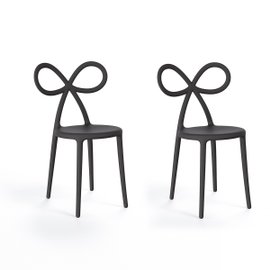
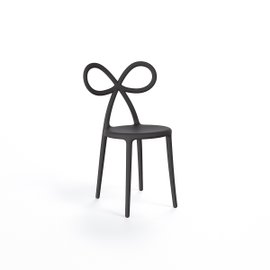
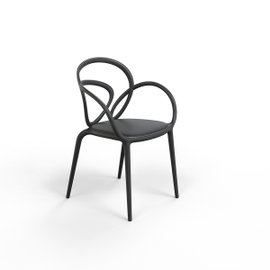
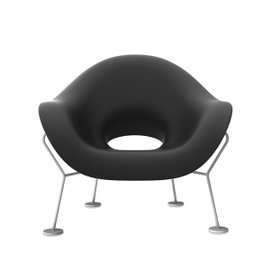

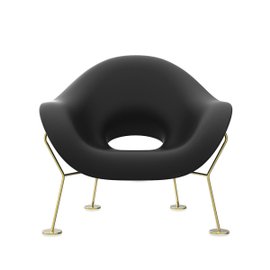
Stefano Giovannoni often talks about identity. Of the consumer’s identity, to be fed. Of the designer’s identity, to be built. Like his own, which is already well-established. The King Midas of design. Or the architect: this is the term used by his entourage to refer to him - giving him another identifying aspect.
Andrea Branzi describes Qeeboo as the Dolce Stil Novo of design. When I read Branzi’s definition, two things came to mind: it’s a provocation; at last, content that’s not self-referential. But what’s Brandi alluding to?
My interpretation of his definition is linked to the fact that Branzi has founded various groups, various movements, from the Radicali onwards. But he’s always found himself working with other men. In this case he realised that there are several women in our group - Nika Zupanc, the women at Front - and noticed that this female component resulted in an expressive language that’s different from an exclusively male approach. Like Nika Zupanc’s Ribbon Chair. Nika has the ability to express this femininity.
The Dolce Stil Novo - I checked last night - abandoned coarse poetry for a gentle, harmonious style. It was a repudiation of excessively contrived and tangled forms: is this what Qeeboo is?
In our collective imagination, Branzi has seen something that can be connected to a new narrative hypothesis. A language that no longer refers to the slightly technical, mechanical lexicon of design, but to stories to be told. A more appropriate language for the expression of emotion. And that’s where the definition came from: the desire to give things a name.
A new narrative: like the K Chair? I saw the presentation, where it’s spoken of as the future archetype - in plastic - of the kitchen chair. Why plastic?
Plastic is first and foremost a democratic material, because it allows a larger section of the public to access design. At Alessi, for example, plastic was crucial in the growth of the brand during the nineties, because it truly revolutionised the target market of consumers for a leading firm in the design world.
It was a bold move.
For the first time an established brand shifted its attention away from the intellectual, adult consumer and towards a younger audience. Plastic had the power to create a link with the new generations, who began to collect this kind of object. Although they were expensive, they were more accessible.

Yet it was the winning move, allowing Alessi to triple its turnover and become the most important firm in terms of figures.
Why is plastic so important?
Plastic places the project into a real industrial circuit. It carries a logic of mass audience. Naturally, it involves a greater degree of professionalism and more experience: it’s one thing to design a wooden chair that the carpenter round the corner can make, and it’s quite another to design a plastic product for which you need steel moulds and tens or hundreds of thousands of euros in investment. What happens if you get it wrong and don’t reach the audience? With plastic you see the real entrepreneur and his capacity to invest in a product, in an idea. Not in an object that needs no investment, that anyone can copy a couple of days later.
But isn’t plastic bad for the planet? I’ve read the criticisms for my support of the material.
There’s a lot of confusion. Firstly, in the consumer world, plastic used for furniture is really a microscopic amount. Just think about PET water bottles, which we could very easily do without. Besides this, there are some plastics - like PVC - which produce harmful smoke when they’re burned. But most of today’s plastics are materials that burn very efficiently and leave no trace. From the waste disposal angle - I’ve had several conversations with people who know about this - a good plastic is really the least of our problems.
And then we should make one thing clear: if plastic ends up abandoned in the environment, it’s a problem of education, not plastic.
* The second part will be published next week *
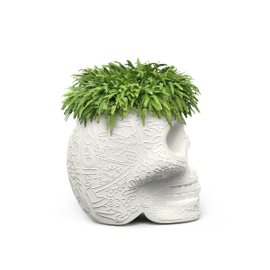
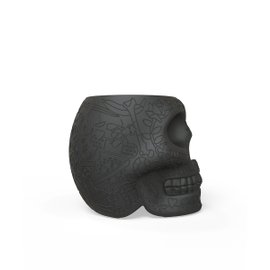
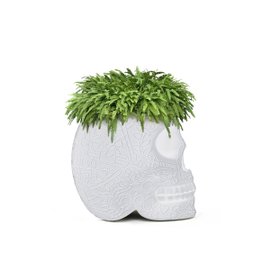
Outdoor
Qeeboo
Stefano Giovannoni
The Crazy Summer Mood: time to go outdoors
Kids
Lighting
White Design
LoveTheSign @ OnBeauty by Cosmoprof
Kids
Home Accessories
Furniture
Gifts
Nika Zupanc
Tables & Chairs
The best of Design
LoveTheSign @ Gaudenzi
Italian Design
A game of opposites
Decor-Mania: looking for the right object for yourself
FRONTdesign
Home with a sea view
Andrea Branzi
Studio Job

 Back to
Back to
Size*
Quantity*




